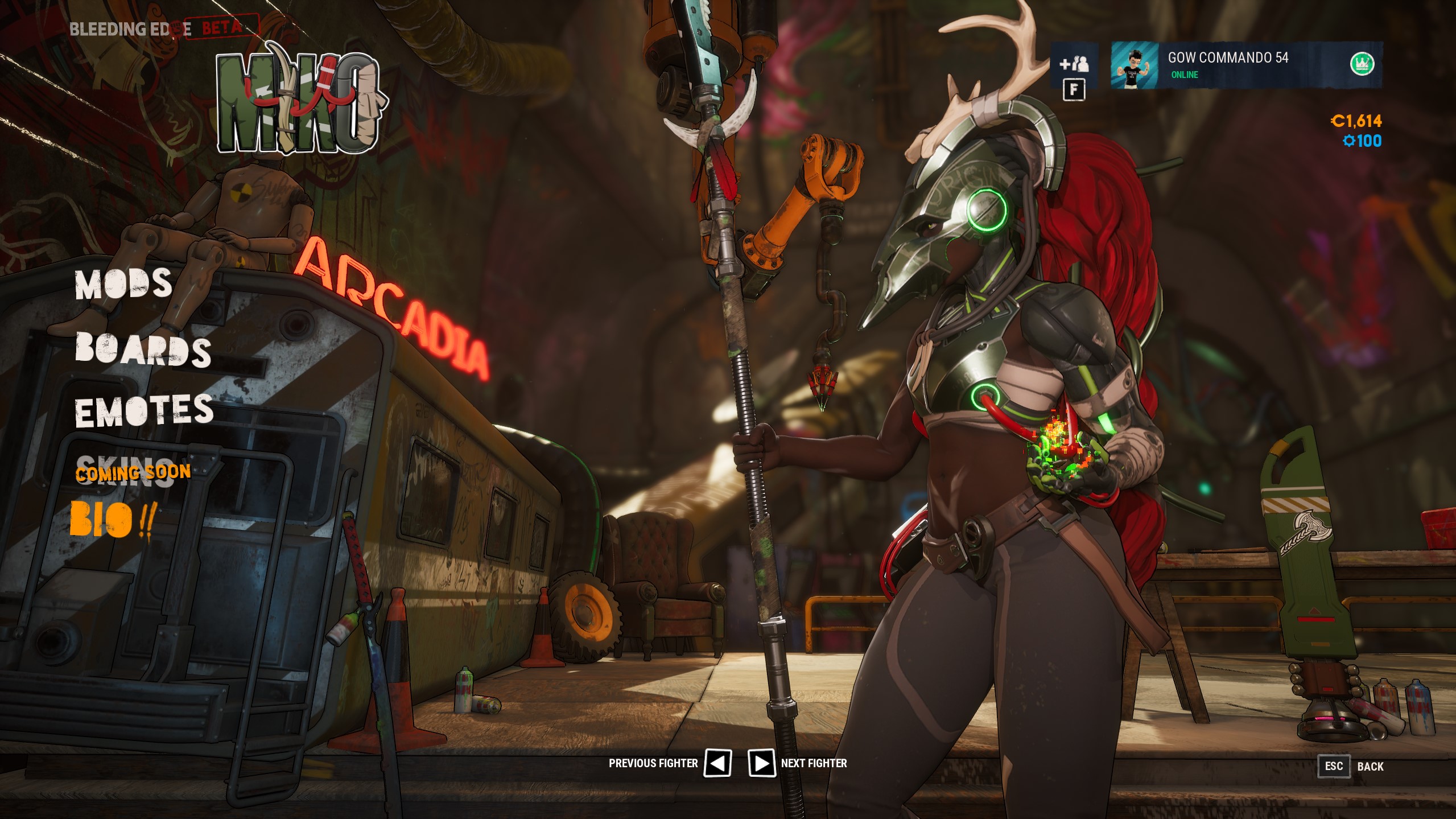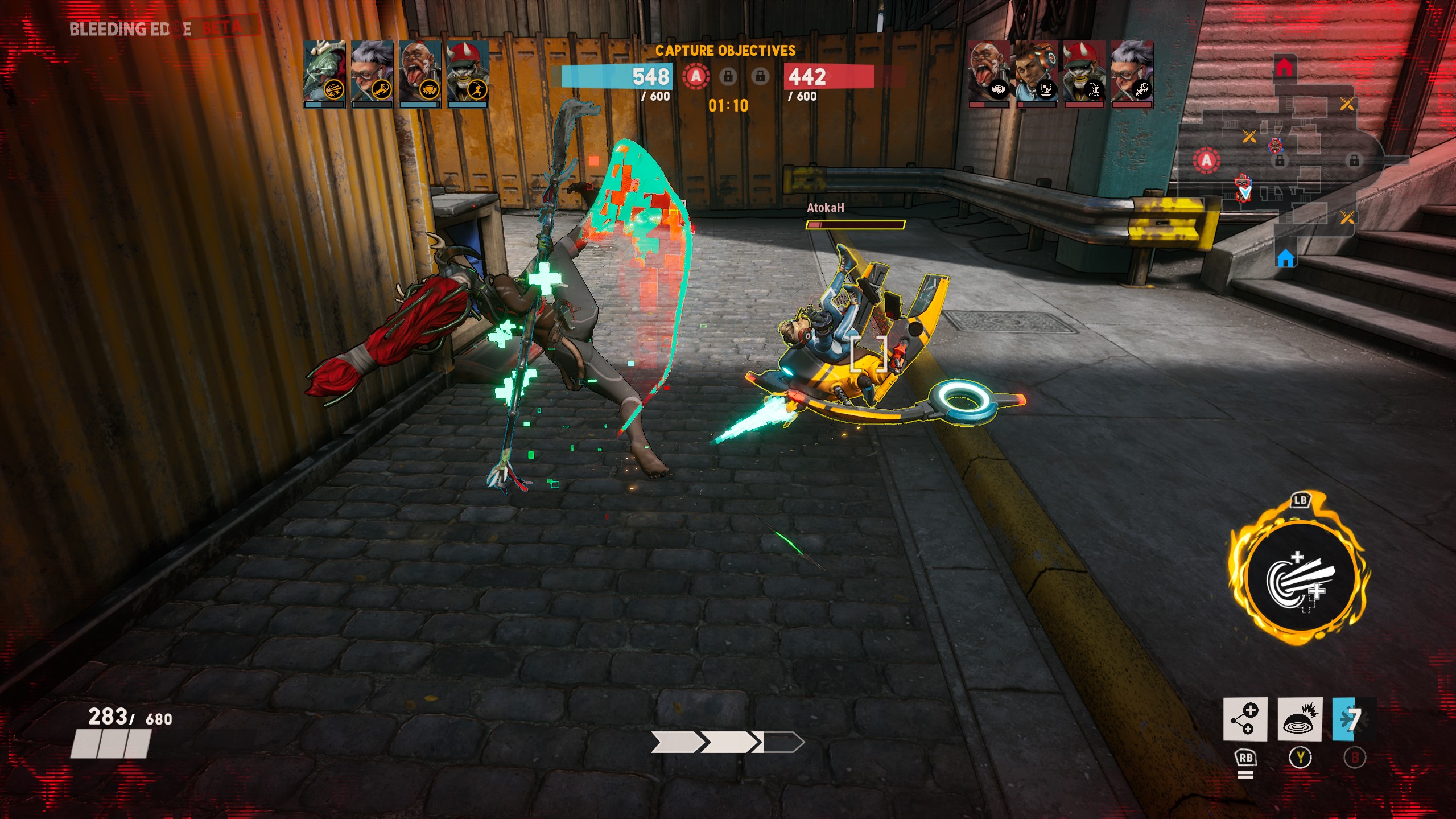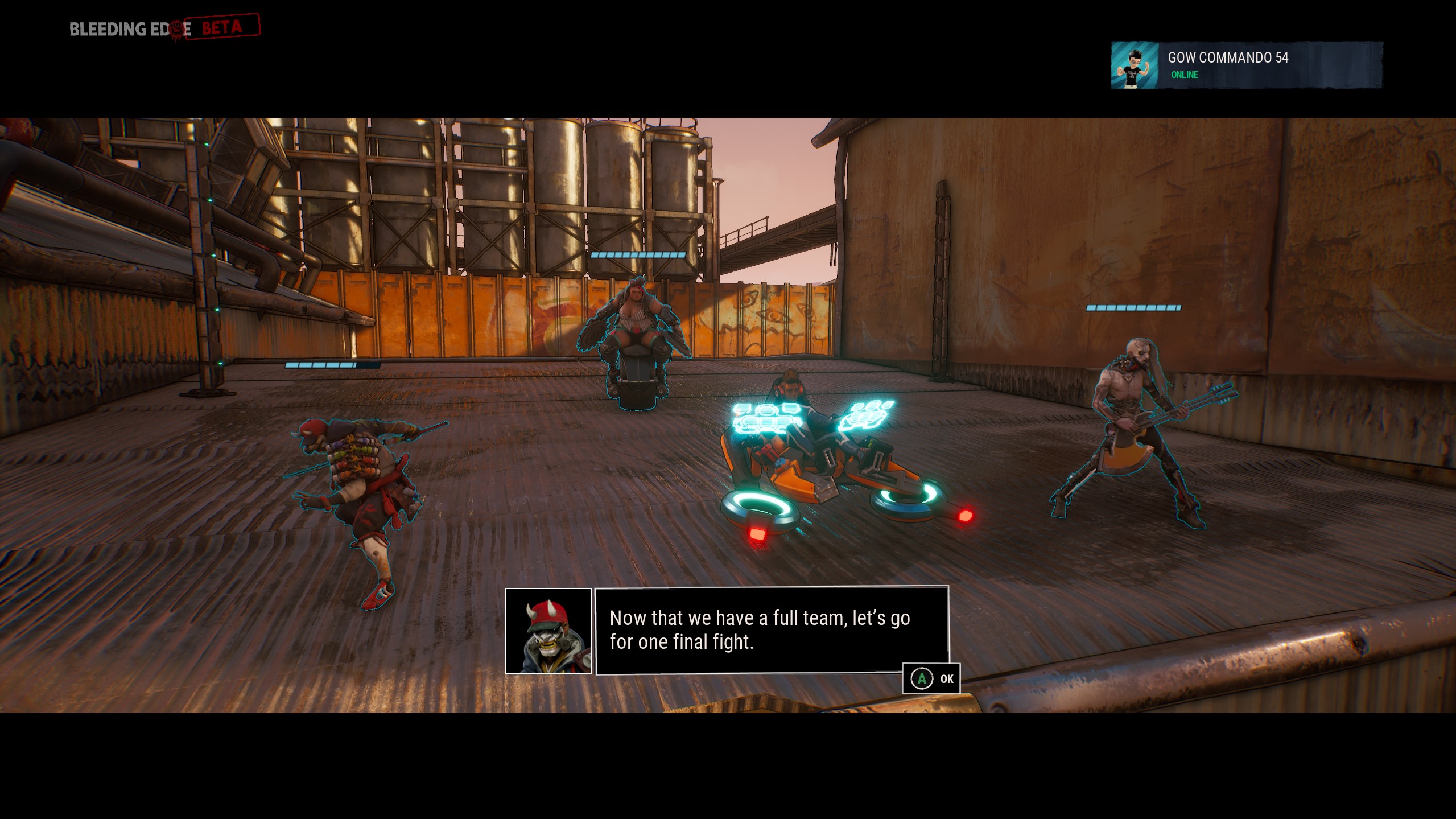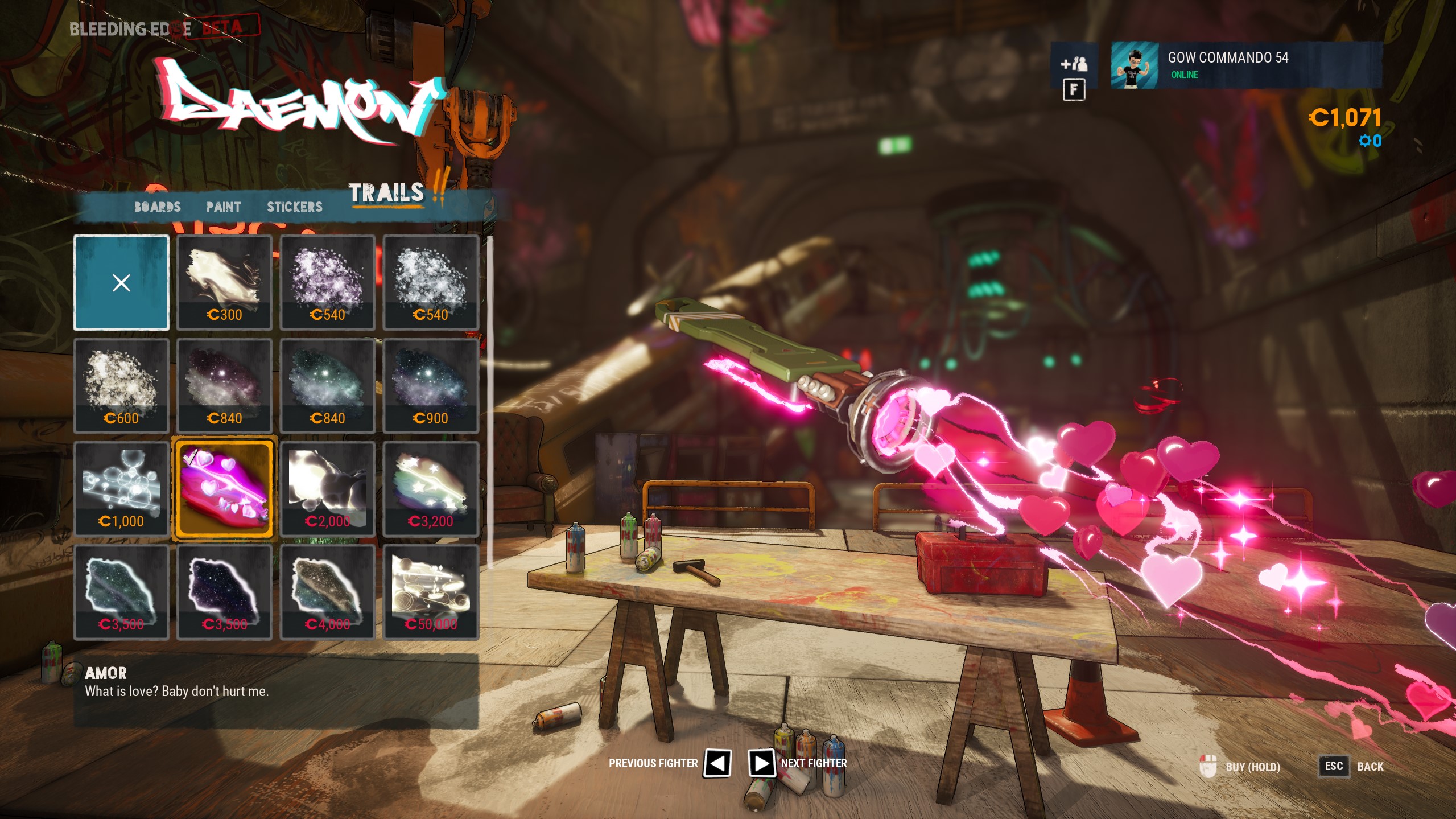Laptop Mag Verdict
Bleeding Edge wows with its gameplay, maps and characters, but it needs to deliver more post-launch content to succeed.
Pros
- +
Superfun combat
- +
Colorful cast of heroes
- +
Intense game modes
- +
Accessibility settings
Cons
- -
Needs more content
- -
Capped at 60 fps
- -
Rumble needs work
- -
Skins are underwhelming
Why you can trust Laptop Mag
Bleeding Edge arrives at a time after hero-based games like Overwatch and DotA transformed their respective genres so radically that, for better or worse, countless others have attempted to replicate what they've accomplished. However, none have attempted to take that hero-based concept and integrate it into a different type of game. But that's where Ninja Theory's latest hack-and-slash brawler comes in.
When I first saw Bleeding Edge at E3, I was kind of worried about the state of the game. Bleeding Edge's announcement came just one year after Xbox revealed that it had purchased the independent game development studio, which seemed too good to be true. As it turned out, Ninja Theory started development for Bleeding Edge in 2016, but it wasn't until the acquisition that Bleeding Edge could fully come to life.
After landing board-first into one of Bleeding Edge's colorful maps and launching into the hack-and-slash brawler-esque chaos of combat, I quickly realized that this could be one of the best PC games of 2020 — that is, as long as Ninja Theory can deliver post-launch.
Editor's Note: This review was originally published on February 18, 2020, but has since been updated with the official launch of Bleeding Edge on March 24, 2020. As it turns out, not much has changed since the beta, but we have updated our impressions to reflect the current state of the game as well as the additions, such as Skins.
Bleeding Edge heroes
Bleeding Edge is immediately captivating thanks to its colorful cast of characters. Representing New York is my personal favorite: Daemon — a ninja-punk who formed the gang of digital misfits known as the Bleeding Edge. After successfully taking his revenge against those who were responsible for his mother's death, Daemon walks the path of redemption. But to get there, he must recruit an army of augmented people that lie in the underworld fighting circuits.

The premise is interesting, but since Bleeding Edge is primarily a multiplayer experience, there isn't a story mode to expand upon that. However, what brings these characters to life, apart from their creative models, is the casual banter before every match starts. I would get little snippets of lore between each character, like how Daemon teased Zero Cool for being a womanizer. Even in the character Workshop, you can see Zero Cool swiping right on his phone, presumably using this world's version of Tinder.
Additionally, Bleeding Edge boasts a striking sense of style in its character designs. Daemon's red-and-blue baseball cap meshed with white horns from a devil mask sporting golden teeth presents a pleasant clash of cultures between New York and Japan. There's the history professor Kulev, who is just straight up an immortal automated snake that plays ventriloquist with his mummified body.
Sign up to receive The Snapshot, a free special dispatch from Laptop Mag, in your inbox.

Another is the South African Xhosa warrior Miko, who dons a metallic ram skull with real ram horns taped around it. And then there's everything about her physical design, which is both voluptuous and deadly.
There are 11 heroes so far: five damage dealers, three supports and three tanks. Each character has a difficulty rating out of 5, and the highest these characters go up to is 2 out of 5, which means there's likely going to be more post-launch. Ninja Theory has already confirmed the twelfth character: Mekko, a trash-talking, crab-walking dolphin piloting a mech.
On the cosmetic side, you can get character skins and emotes. You can also customize your hoverboard, which you use to get around faster in-game. My Board is currently shaped like a knife and it has glowing pink hearts trailing out of the exhaust. You can add stickers to it and even give it a full on paint job.
Unfortunately, the skins are pretty underwhelming, as most of them are simple color palette changes, but there are a couple of unique ones that change a character's overall design. For example, Zero Cool has an Outrider skin, which'll give him some black sunglasses, a pink mohawk and a skull T-shirt. However, even the better skins are tame, especially considering that games like Overwatch go all out with its skins.
Bleeding Edge combat
Each member of the Bleeding Edge has three special abilities and the option to choose from two super-moves. As far as basic abilities go, you have your regular attack, evade, parry and jump. Daemon is quite literally a ninja — he can turn invisible, put an enemy to sleep, lunge at them if they run away, and when they're out of reach, out come the shurikens with a sprinkle of slowdown. I combo all of that until my Shadow Strike super is ready, which lets me rapidly strike enemies within my area of effect.

If you want to get into the nitty and gritty of Bleeding Edge's mechanics, you can also build out your character with mods — three for each build. You unlock mods by leveling up, and mods can do anything from give you more base health to enhancing a specific ability on your character. For example, Daemon's Flyer mod will increase the range of his Shuriken by 33%.
I created my own build for Daemon that focused on the Stealth-Sleep ability. In matches, I dive in and out of stealth to put enemies to sleep, then cycle through my moves until I can put them to sleep again. At this point, they'd run away and I'd kill them off with a shuriken.
Bleeding Edge game modes
Bleeding Edge offers only two game modes: Objective Control and Power Collection, both of which are simple but intense.

The former is basically a riff off of Domination, which is a game mode found in nearly every first-person shooter. You simply have to capture the objectives and hold them for a designated time. There are three objectives on the map, but a random number of them will be activated at once and they will remain active for a short time. You'll have to strategize which points you want to hold and which to ditch. And while you do have to play the objective, you'll get points for killing enemy players as well.
The latter is a little more complicated. There are two phases in Power Collection: Collect the power cells and deliver the power cells. During the first phase, you have to scour the map for the limited number of power cells, and when the second phase starts, simply deliver the cells to a designated point. You'll not only get points for killing enemies in this mode, but players will also drop the power cells they're holding upon death.
Both game modes offer plenty of room for strategy, and the way they're designed forces you to communicate with your teammates, as opposed to simply forcing teams into an all-out hack-and-slash brawl, as tempting as that might be. As much as I enjoy these two game modes, there's no way to choose between the two when you're searching for a match. I really hope there are more modes to come post-launch. And there really should be a simple team death-match game mode, because I just want to beat on some fools.
Bleeding Edge maps
There are only four maps available in Bleeding Edge: Aqueducts, Boneyard, Jersey Sink and Skygarden. What really makes these maps come to life, apart from the colorful environments, are the map hazards in place.

In Aqueducts, you might get shocked by an electric fence; at the Boneyard, full-on missiles rain from the sky at inopportune moments; at the Skygarden, there are furnaces that'll light your bum on fire; and in Jersey Sink, the worst offender of them all, there are a pair of trains that ride through the center, aiming to roll you into dough.
Although the hazards are certainly frustrating, they're what immerse me into the world, as the hazards change how you interact with the environments. Skygarden's elegant red structures, lush greenery and blue ponds pop amid the map's dangerous flames. And the Aqueducts' polluted waters and corroded green chambers glisten in the light of the blue electric fences.
Unfortunately, there's no music in-game, which is a shame because the one OST that you can hear in the main menu, "Life Packs Punches," sounds great. As much as I love the sound design, from the katana slashes to the big-belly body slams, I'd like Ninja Theory to implement some of the OST into the gameplay.
What Ninja Theory needs to do to make this successful
Bleeding Edge is an eSports game in the making, and what Ninja Theory needs to do to propel this game on the world stage is to treat it like one. That means adding leaderboards, seasons and a ton of rewards. And with the full force of Xbox backing Ninja Theory, getting an eSports competition up and running shouldn't be too difficult.

Bleeding Edge has so much potential, and it's one of the few competitive games I've played that I'm going all in for. My biggest concern is that Ninja Theory is also working on several other titles, and something like Bleeding Edge needs constant attention to be successful. You need to listen to fans, apply that feedback constructively and continue that for years to come. This isn't the sort of game that should go away after a year. We want to see some Overwatch-level additions to the content post-launch. Otherwise, I can't imagine Bleeding Edge will remain relevant for very long.
Bleeding Edge PC performance
Bleeding Edge generally ran well for me despite a few stutters and lag spikes every once in awhile. However, on the r/bleedingedge subreddit, people said that the game is suffering from poor performance. Surprisingly, the Xbox version seems to be suffering from serious performance issues as well, and some people have complained about major lag.

I was impressed by the amount of graphics settings that Bleeding Edge offers. There are settings for Gamma, V-Sync, Brightness, Contrast and Render Scale. There's also a general Graphics Quality settings, and within that you can customize Texture Quality, Texture Filtering Quality, Shadow Detail, Antialiasing Quality, Post Process Quality and Screen space reflections.
Funnily enough, the way Bleeding Edge is optimized reminds me of Overwatch, as Bleeding Edge's art direction took a similarly clean, cartoony approach. As a result, the difference between the high and low graphics settings isn't as significant as other games.
Ninja Theory recommends playing with a controller, but you can also use keyboard and mouse. I've tested both and they seem equally viable for gameplay. You can also easily map different inputs for your keyboard or gamepad. What's interesting is that there's also an Alternative slot in the Input Mapping tab, so if you have a different input device you can assign inputs to that.
Speaking of controllers, the rumble was barely noticeable in-game, and while keyboard and mouse players won't notice, console gamers will find it incredibly jarring. With third-person action games in particular, rumble plays an important part in the immersion.
On the subject of settings, Bleeding Edge also features a ton of accessibility options, which is awesome and thoughtful. Settings include High Contrast Mode, Dynamic Backgrounds, Color Blind Mode, Color Blind Severity, Text-To-Speech, Menu Narration Volume, Speech-To-Text, Text Chat Font Size, Chat Wheel Activation, Lock-on Activation and Vibration.
If you're wondering whether or not to play Bleeding Edge on PC or console, we'd recommend PC, since Bleeding Edge has a detailed range of graphical settings that you can tinker with.
Bleeding Edge PC requirements
I ran Bleeding Edge on my desktop-level Nvidia GeForce GTX 1070 GPU with 8GB of VRAM and was consistently hitting 60 frames per second at 1440p on Epic settings. The Nvidia GeForce GTX 1050 Ti GPU inside my brother's Dell XPS 15 was getting somewhere between 30 to 40 fps in-game at 1080p on Epic settings.

Fps is capped at 60 fps while you're playing the game, but uncapped when you're in the main menu or watching a kill cam. I've seen it go up to 144 fps. This was the same case in the beta. I then tested one of the advanced settings: Render Scale, which changes the in-game resolution without changing the screen resolution. When I lifted it up from 100% to 200%, it tanked my frames down to an average of 27 fps (keep in mind that the in-game resolution jumped from 1440p to 2880p).
You can play Bleeding Edge for free if you have Xbox Game Pass via your Xbox, or the Xbox app on PC. If you're opposed to both, you can also buy Bleeding Edge on Steam for just $30.
The minimum requirements for a system to run Bleeding Edge include Windows 7, an Intel Core i3-560 or AMD Phenom II X4 805 CPU, 4GB of RAM, an Nvidia GeForce GTX 750 Ti or AMD Radeon R7 360 GPU and 40GB of available space.
Meanwhile, the recommended requirements are Windows 7, an Intel Core i5-4670K or AMD FX-8370 CPU, 8GB of RAM, an Nvidia GeForce GTX 1060 or AMD Radeon RX 580 GPU and 40GB of available space.
Bottom line
Bleeding Edge is impressively complex, superfun and an overall great start to what could be the hottest multiplayer of the game of the year. Unfortunately, this won't be enough if Ninja Theory doesn't plan for the future.
What Ninja Theory needs to deliver is a post-launch road map, so that gamers have something to look forward to. But most important, Bleeding Edge needs to be eSports ready. It's only so much fun playing competitively before gamers realize they're not getting anything in return.
I'm disappointed to see that not much has changed with Bleeding Edge since the beta, but I am still hopeful for the brighter future it could be a part of.

Rami Tabari is the Reviews Editor for Laptop Mag. He reviews every shape and form of a laptop as well as all sorts of cool tech. You can find him sitting at his desk surrounded by a hoarder's dream of laptops, and when he navigates his way out to civilization, you can catch him watching really bad anime or playing some kind of painfully difficult game. He’s the best at every game and he just doesn’t lose. That’s why you’ll occasionally catch his byline attached to the latest Souls-like challenge.

